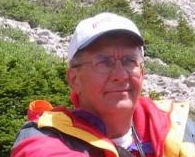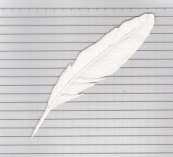Sunday December 24, 2006 6:15 am Edmonton
A. Morning Musings
7:45 am Christmas Eve I began the morning by making further notes on "Three Roads to Quantum Gravity".
After completing notes for chapters 2 - 4, I then updated my causal Learning chart. Unfortunately it is too large to save in any format except as an Inspiration file. Comparing this chart with the December Chronology Table, there is actually very little difference. The overall structure is the same, all that is missing are the arrows joining the various boxes in a chronological order.
B. Plan
| Immediate |
|
|
| Health |
Walk & exercise |
1 hr |
| Science |
Make notes for "Three Roads to Quantum Gravity" |
1 hr |
| History |
Read Watson "Ideas" |
1 hr |
| Philosophy |
Read & make notes for "Breaking the Spell" |
1 hr |
| GO |
Complete reading "Lessons in the Fundamentals of Go" Volume 1 |
1 hr |
| Literature |
Continue reading "Virginia Woolf: The Inner Life" by Julia Briggs |
1 hr |
| |
Continue reading "Selected Works of Virginia Woolf" - Jacob's Room |
1 hr |
| |
Continue reading "A Question of Blood" by Ian Rankin |
3 hr |
| Model Trains |
Continue assembly of coaling tower |
1 hr |
| Later |
|
|
| Chores |
Investigate water softeners for home |
|
| Technology |
Read manual for cell phone |
|
| |
Make notes for chap. 4 of "Switching to the Mac" |
|
| |
Begin reading "iPhoto" |
|
| |
digital photography - learn about using the various manual settings |
|
| Philosophy |
Read "The Art of Living" by Epictetus |
|
| Mathematics |
Read "Fearless Symmetry" chap 9: Elliptic Curves |
|
| |
Make notes on the beginnings of number theory |
|
| |
Larson "Calculus" |
|
| |
Read "Symmetry" by Hermann Weyl |
|
| |
Read "The Computational Beauty of Nature" Chap
3 |
|
| |
Gardner "The Colossal Book of Short Puzzles" |
|
| Model Trains |
Build oil refinery diorama: add ground cover |
|
| |
Assemble second oil platform kit |
|
| |
Assembly of CN 5930, an SD40-2 with a NAFTA logo |
|
| Puzzles |
The Orange Puzzle Cube: puzzle #9 |
|
C. Actual/Notes
|
|
|
Science Chronology |
Notes for "Three Roads to Quantum Gravity " (2001) by Lee Smolin
6:20 am This is a continuation of my notes for this book. |
Chapter Two: "In the Future We Shall Know More" [p. 26 - 32]
- The following two statements are wideley accepted by physicists and cosmologists today:
- Nothing can travel faster than light.
- The universe is approximately 14 billion years old.
- From these two statements Smolin deduces that we can only see light that has travelled less than 13 billion light-years. Any light that is travelling from further away than that has yet to reach us.
- He then points out that there is no evidence that the universe is either bounded or shrinking and thus concludes that we can only see a small fraction of what exists.
- Finally, in the future the universe will be even older and hence we will be able to see further and thus we shall "know more" about what is out there.
| This is a very short chapter, but it makes perfect sense. |
Chapter Three: "Many Observers, Not Many Worlds" [p. 33 - 48]
- "... doing cosmology requires a radical revision of our way of doing science - a revision that goes even to the foundations of logic." [p. 33]
- "We must acknowledge that each observer can have only a limited amount of information about the world, and that different observers will have access to different information." [p. 33]
- "We are constructing a pluralistic version of quantum cosmology in which there is one universe. That universe has, however, many different mathematical descriptions, each corresponding to what a different observer can see when they look around them." [p. 48]
- The mathematics/logic for this description is relatively new and is called topos theory.
| I have googled "topos theory" and located a number of articles on the topic. But, as Smolin says, this is very difficult material to understand. I will leave it for the moment and simply assume that such mathematics exists. |
Chapter Four: The Universe is Made of Processes, Not Things [p. 49 - 65]
- "The idea of a state in Newtonian physics shared with classical sculpture and painting the illusion of the frozen moment. This gives rise to the illusion that the world is composed of objects. ... But relativity and quantum theory each tells us that this is not how the world is. They tell us - no, better, they scream at us - that our world is a history of processes. Motion and change are primary." [p. 53]
- "From this point of view, the universe consists of a large number of events. An event may be thought of as the smallest part of a process, a smallest unit of change." [p. 53]
- "The universe of events is a relational universe. That is, all its properties are described in terms of relationships between the events." [p. 53]
- "The most important relationship that two events can have is causality." [p. 53]
|
D. Reflection |

